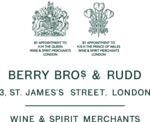Sudan–United Kingdom relations
Bilateral relations of SudanBilateral relations of the United KingdomRelations of colonizer and former colonySource attributionSudan–United Kingdom relations

Sudan–United Kingdom relations are foreign relations between Sudan and the United Kingdom. Sudan has an embassy in London whilst the United Kingdom has an embassy in Khartoum. Most of the recent relations between the two countries centre on the region of Darfur.
Excerpt from the Wikipedia article Sudan–United Kingdom relations (License: CC BY-SA 3.0, Authors, Images).Sudan–United Kingdom relations
Russell Court, London Victoria
Geographical coordinates (GPS) Address Nearby Places Show on map
Geographical coordinates (GPS)
| Latitude | Longitude |
|---|---|
| N 51.50489 ° | E -0.13855 ° |
Address
Russell Court
Russell Court
SW1A 1PL London, Victoria
England, United Kingdom
Open on Google Maps






